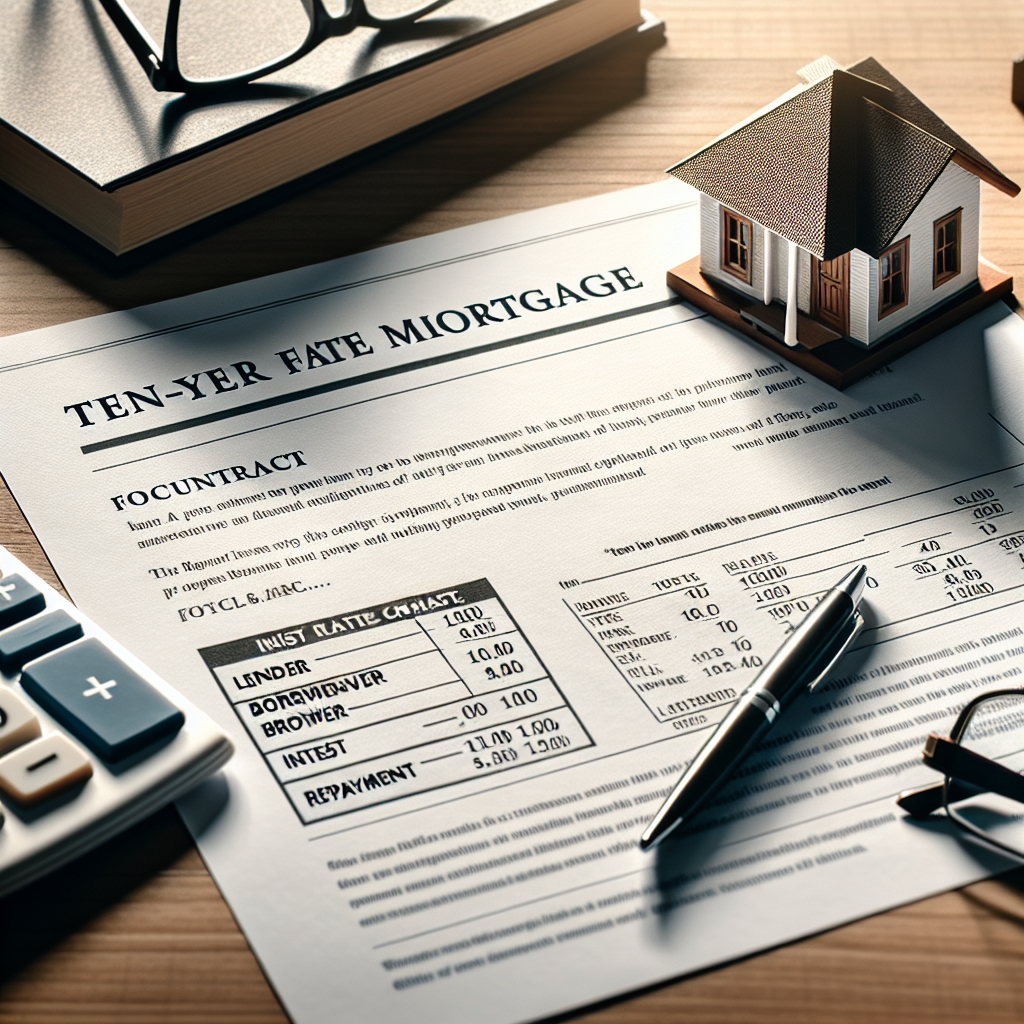
Ten year fixed rate mortgage
The Advantages and Disadvantages of a Ten Year Fixed Rate Mortgage
When it comes to home financing, choosing the right mortgage type can be a daunting task. Among the many options available, a ten year fixed rate mortgage stands out for its unique features and benefits. This article delves into what a ten-year fixed rate mortgage entails, its advantages, disadvantages, and what factors to consider before committing to it.
What is a Ten Year Fixed Rate Mortgage?
A ten year fixed rate mortgage is a home loan that has a fixed interest rate for a term of ten years. This means that your monthly mortgage payments remain constant throughout the life of the loan, providing borrowers with stability and predictability. The fixed nature of the interest rate shields you from fluctuations in the market, which can be particularly advantageous in times of rising interest rates.
Advantages of a Ten Year Fixed Rate Mortgage
Many homeowners are attracted to the ten-year fixed rate mortgage for various reasons. Here are some of the key advantages:
- Lower Interest Rates: Generally, ten-year fixed rate mortgages offer lower interest rates compared to longer-term loans. This can lead to significant savings over the life of the loan.
- Faster Equity Building: Because the loan term is shorter, more of your monthly payment goes toward paying down the principal balance. This allows you to build equity in your home more quickly.
- Predictable Payments: Having a fixed mortgage rate ensures that your payments remain the same, making it easier to budget and plan for other expenses.
- Freedom from Long-Term Debt: Paying off a mortgage in ten years means less time spent in debt, freeing you up for future investments or other financial goals sooner.
Disadvantages of a Ten Year Fixed Rate Mortgage
While there are notable advantages, it’s also essential to weigh the downsides:
- Higher Monthly Payments: The shorter the term, the higher the monthly payments. This can strain your budget if your financial situation changes.
- Less Flexibility: Committing to a ten-year term can reduce your financial flexibility. If you plan to move or refinance within that period, you may face prepayment penalties.
- Potential for Payment Shock: New homebuyers may find adjusting to higher payments challenging, particularly if coming from renting or lower mortgage payments.
Key Considerations Before Choosing a Ten Year Mortgage
Before selecting a ten year fixed rate mortgage, it's essential to consider several factors:
- Your Financial Situation: Assess your budget, income stability, and existing debts. Ensure a comfortable monthly payment without compromising your lifestyle.
- Interest Rate Trends: Understand where interest rates are projected to go. If they are low, locking in a fixed rate might be beneficial.
- Your Long-Term Plans: Consider how long you plan to stay in the home. If you anticipate moving within a few years, a longer loan term may be more appropriate.
- Loan Type: Investigate different loan types and lenders. Terms can vary significantly, and shopping around might yield better offers.
How to Get the Best Rate on Your Ten Year Fixed Mortgage
Securing the best interest rate on a ten year fixed rate mortgage can make a significant difference in your overall financial health. Here are some tips:
- Improve Your Credit Score: A higher credit score can lead to lower interest rates. Pay bills on time, reduce debts, and keep credit utilization low.
- Shop Around: Different lenders offer different rates. Get quotes from multiple sources, including banks, credit unions, and mortgage brokers.
- Consider Point Payments: Paying for points can lower your interest rate but requires upfront costs. Assess whether this makes sense based on how long you plan to keep the mortgage.
- Stay Informed: Monitor economic news and trends in the mortgage market, as rates can fluctuate based on national and global events.
Understanding the Costs Associated with a Mortgage
When considering a ten year fixed rate mortgage, it’s crucial to understand the various costs involved beyond just the principal and interest. These can include:
- Closing Costs: Fees associated with finalizing your mortgage, including appraisal, title search, and legal fees, can add up.
- Property Taxes: Homeowners must also budget for property taxes, which can vary widely based on location.
- Homeowners Insurance: Protecting your investment with homeowners insurance is typically required by lenders.
- Private Mortgage Insurance (PMI): If your down payment is less than 20%, you may need to pay PMI, adding to your monthly costs.
The Impact on Financial Planning
Choosing a ten year fixed rate mortgage can have significant implications for your long-term financial strategy. Here's how it can impact your plans:
- Faster Debt Elimination: With the mortgage paid off sooner, you could allocate funds toward retirement savings, investments, or other debts once the loan is satisfied.
- Increased Cash Flow: Once the mortgage is paid off, you'll have more monthly cash flow to enjoy, save, or invest.
- Potential Tax Benefits: The interest you pay on the mortgage could be tax-deductible, although this is subject to changes in tax legislation.
Conclusion
A ten year fixed rate mortgage can be an excellent choice for those looking for stability, lower interest rates, and a clear path to homeownership. However, it's vital to fully understand the implications of choosing this financing option, considering both the advantages and disadvantages.
By carefully evaluating your financial situation, future plans, and market conditions, you can make an informed decision that aligns with your long-term goals. Remember to weigh all your options and consult with a financial advisor if needed. With the right approach, a ten-year fixed-rate mortgage could be a beneficial stepping stone toward achieving your homeownership dreams.
By Guest, Published on August 2nd, 2024